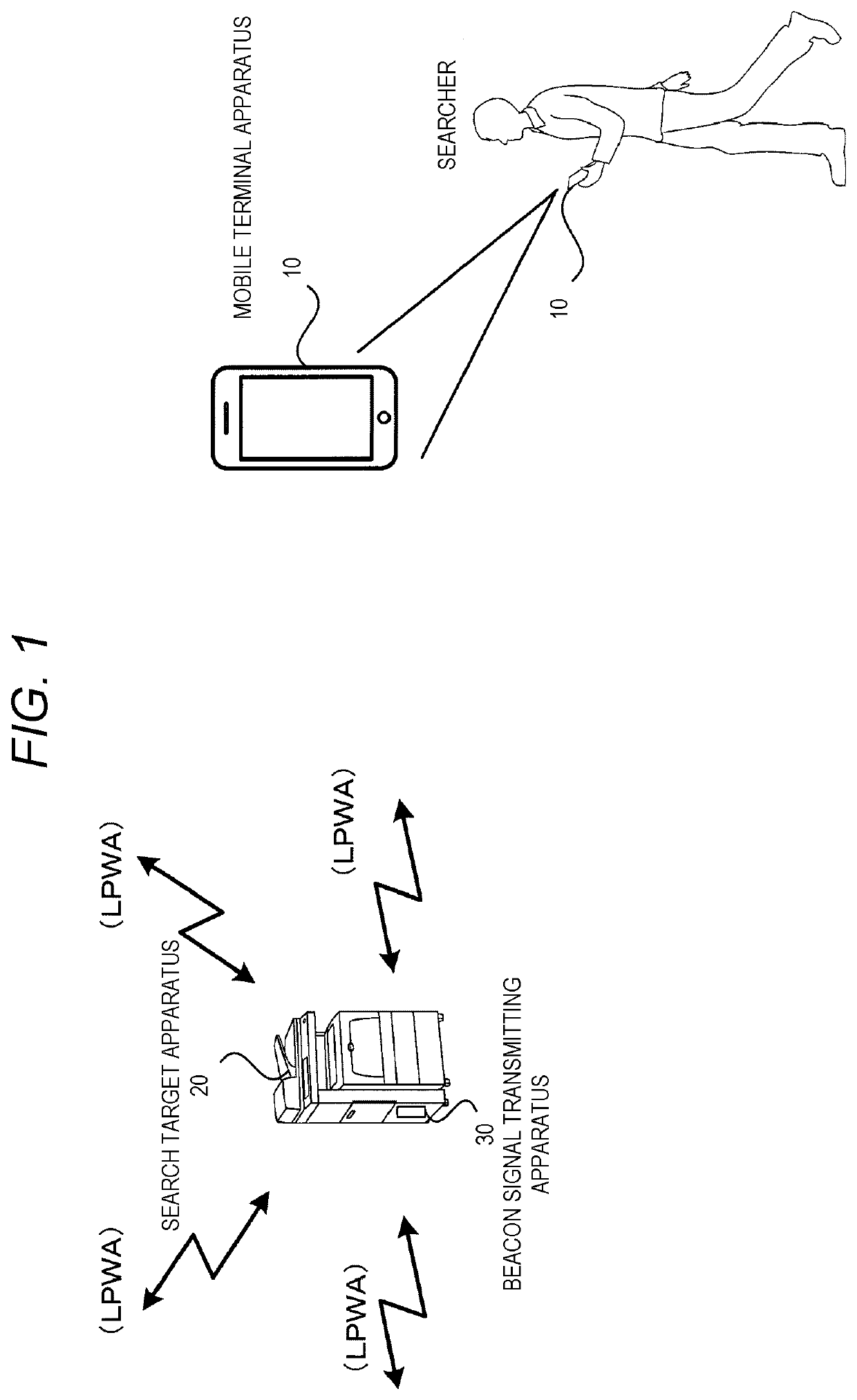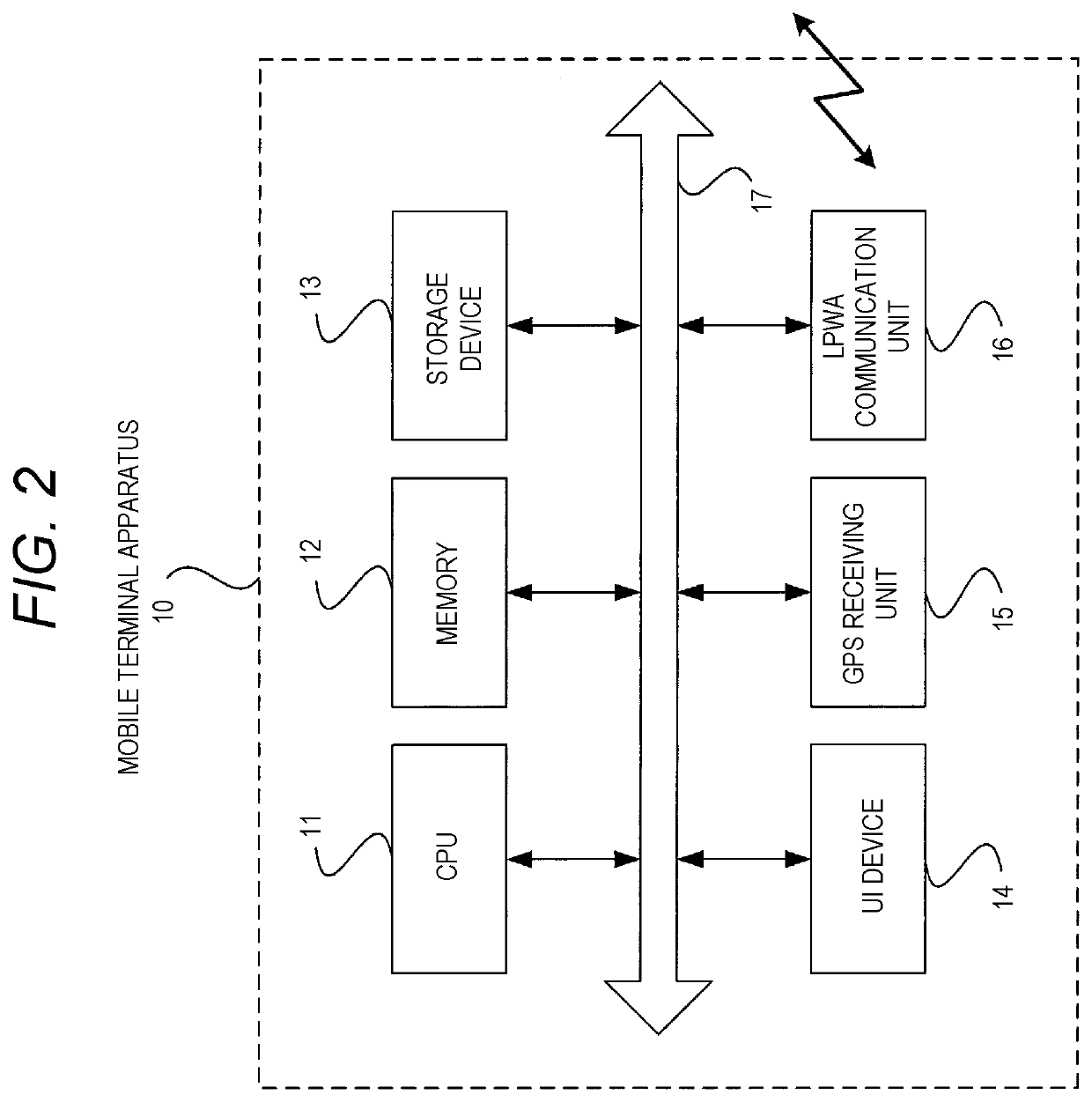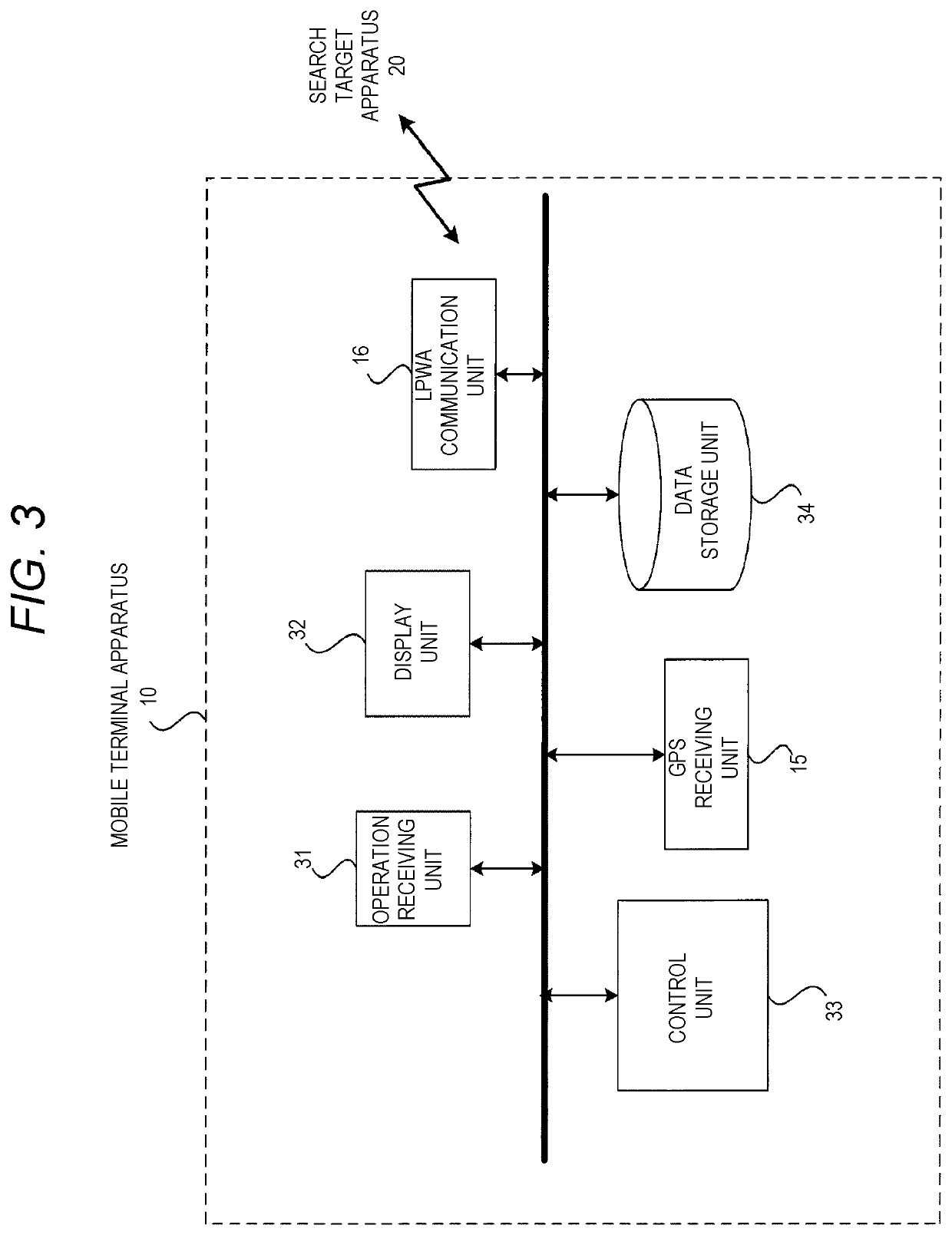Information processing apparatus and non-transitory computer readable medium
Active Publication Date: 2020-09-03
FUJIFILM BUSINESS INNOVATION CORP
View PDF0 Cites 0 Cited by
- Summary
- Abstract
- Description
- Claims
- Application Information
AI Technical Summary
Benefits of technology
This patent describes an information processing apparatus that allows a searcher to reach a search target even if they cannot make direct contact with it. The apparatus uses radio waves from the search target to calculate its position and sends a notification to guide the searcher to its location. This can be useful in situations where there are no direct lines of sight between the searcher and the search target, such as in a forest or urban area. The technical effect is to improve the efficiency and accuracy of searches in these environments.
Problems solved by technology
However, aspects of the non-limiting embodiments are not required to address the advantages described above, and aspects of the non-limiting embodiments of the present disclosure may not address advantages described above.
Method used
the structure of the environmentally friendly knitted fabric provided by the present invention; figure 2 Flow chart of the yarn wrapping machine for environmentally friendly knitted fabrics and storage devices; image 3 Is the parameter map of the yarn covering machine
View moreImage
Smart Image Click on the blue labels to locate them in the text.
Smart ImageViewing Examples
Examples
Experimental program
Comparison scheme
Effect test
modified example
[0081]In the above exemplary embodiment, a case where the position of a search target apparatus is searched by a mobile terminal apparatus such as a smartphone is used for description, but the present disclosure is not limited thereto, and the present disclosure can be similarly applied to a case where the position of the search target apparatus is searched by various information processing apparatuses other than the mobile terminal apparatus.
the structure of the environmentally friendly knitted fabric provided by the present invention; figure 2 Flow chart of the yarn wrapping machine for environmentally friendly knitted fabrics and storage devices; image 3 Is the parameter map of the yarn covering machine
Login to View More PUM
 Login to View More
Login to View More Abstract
An information processing apparatus includes: an acquisition unit configured to acquire pieces of information on position of the information processing apparatus; a receiving unit configured to receive radio waves from a search target apparatus; a calculation unit configured to calculate the position of the search target apparatus using the pieces of information on position of the information processing apparatus acquired at plural points by the acquisition unit and using a distance between the information processing apparatus and the search target apparatus estimated from an intensity of the radio waves received by the receiving unit at each of the plural points; and a notification unit configured to send notification to guide a searcher to the position of the search target apparatus calculated by the calculation unit.
Description
CROSS-REFERENCE TO RELATED APPLICATIONS[0001]This application is based on and claims priority under 35 USC 119 from Japanese Patent Application No. 2019-037690 filed Mar. 1, 2019.BACKGROUND(i) Technical Field[0002]The present disclosure relates to an information processing apparatus and a non-transitory computer readable medium.(ii) Related Art[0003]JP-A-2017-142180 discloses a position estimation system that estimates the position of a transmitter based on a measurement result obtained at plural points by moving the position of one mobile terminal and measuring received radio wave intensity and positions of the mobile terminal at plural different points, the mobile terminal including a radio wave measurement unit that receives a radio wave transmitted by the transmitter to measure intensity of the received radio wave, and a position measurement unit that measures the position of the mobile terminal itself.SUMMARY[0004]Aspects of non-limiting embodiments of the present disclosure re...
Claims
the structure of the environmentally friendly knitted fabric provided by the present invention; figure 2 Flow chart of the yarn wrapping machine for environmentally friendly knitted fabrics and storage devices; image 3 Is the parameter map of the yarn covering machine
Login to View More Application Information
Patent Timeline
 Login to View More
Login to View More IPC IPC(8): G01S13/42G01S5/00G01S5/02G01S5/14
CPCG01S5/14G01S5/009G01S13/42G01S5/0242G01S11/06G01S5/0249G01S5/0036Y02D30/70
Inventor KATO, SEISHIROHAYASHI, KAZUOOUE, SUGURU
Owner FUJIFILM BUSINESS INNOVATION CORP
Features
- R&D
- Intellectual Property
- Life Sciences
- Materials
- Tech Scout
Why Patsnap Eureka
- Unparalleled Data Quality
- Higher Quality Content
- 60% Fewer Hallucinations
Social media
Patsnap Eureka Blog
Learn More Browse by: Latest US Patents, China's latest patents, Technical Efficacy Thesaurus, Application Domain, Technology Topic, Popular Technical Reports.
© 2025 PatSnap. All rights reserved.Legal|Privacy policy|Modern Slavery Act Transparency Statement|Sitemap|About US| Contact US: help@patsnap.com



